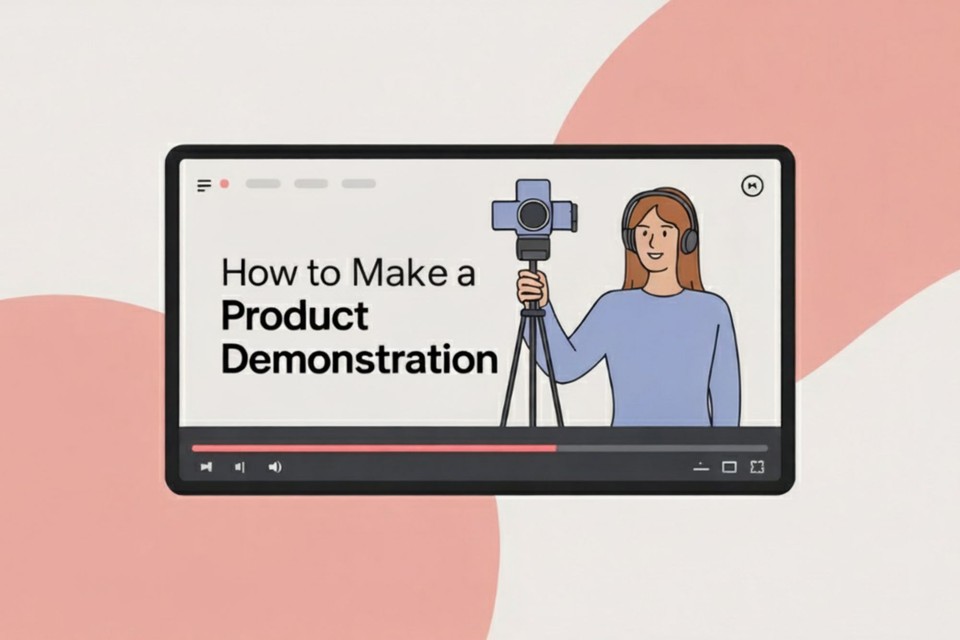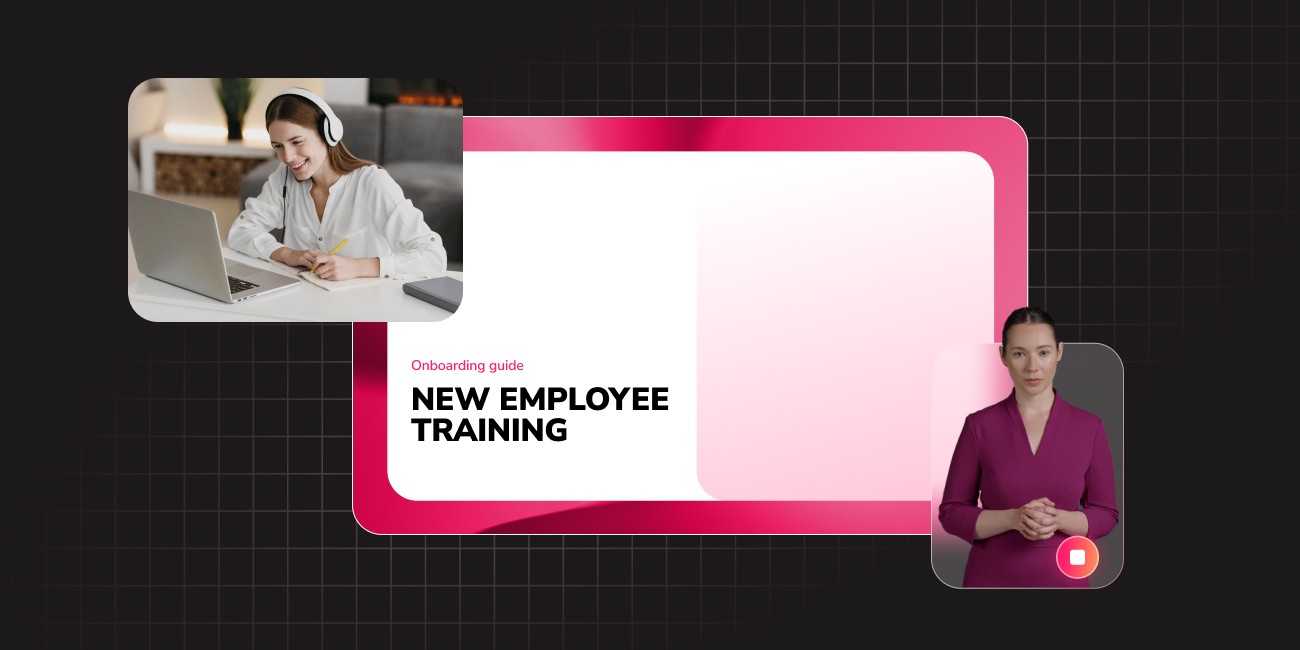Introduction
If you’ve ever shopped online and hesitated before hitting that “Buy Now” button, you know exactly why product demonstration videos are powerful. Instead of relying only on descriptions and photos, a demo video shows your product in action - how it looks, feels, and solves problems.
But here’s the real challenge: how do you make a product demonstration video that doesn’t just “show the product,” but actually captivates your audience, builds trust, and nudges them toward a purchase?
That’s what we’re going to dive into today. Think of this as your personal guide. I’ll walk you through the exact steps - from planning to publishing, so by the end, you’ll know how to create a polished product demo video that your audience actually wants to watch.

Why Product Demonstration Videos Matter
Before we jump into the how, let’s talk about the why.
-
People remember visuals - Studies show viewers retain 95% of a video's message compared to only 10% from text.
-
Builds trust - Customers can see the product in action, not just imagine it.
-
Boosts conversions - According to Wyzowl, 82% of people say they’re convinced to purchase a product/service after viewing their brand's video.
-
Versatile content - Demo videos work for websites, landing pages, social media, email marketing, and even trade shows.
So yes, a product demo isn’t just “nice to have.” It’s one of the most effective marketing tools you can create.
How to Make a Product Demonstration Video
Step 1: Start with a Clear Plan
Every great video begins with clarity. Ask yourself:
-
Who is my audience? A demo for first-time buyers will look different from one for advanced users.
-
What problem does this product solve? Highlight the solution, not just the features.
-
Where will this video live? Social media? Your product page? YouTube? Tailor the length and format accordingly.
💡 Pro Tip: Keep it short. Aim for 2–3 minutes max for most demos. Social platforms, especially, reward brevity.
Step 2: Write a Story, Not a Script
Here’s where most brands get it wrong. They throw a list of features into a video and call it a demo. But your audience doesn’t buy features - they buy solutions.
Instead of a stiff script, write your demo like a mini story:
-
Hook the viewer. Start with the problem or frustration your audience faces.
-
Introduce the product. Show how it directly solves the problem.
-
Demonstrate key features. Walk through the most important actions.
-
Close with a call-to-action. Tell viewers exactly what to do next (sign up, buy, or learn more).
This narrative flow feels natural and keeps people watching.
Step 3: Gather the Right Tools
You don’t need Hollywood-level equipment, but you do need the right tools.
-
Camera/Screen Recorder: Your smartphone, webcam, or screen recording software works perfectly. Tools like Fliki or Loom are beginner-friendly.
-
Microphone: When it comes to videos, audio is more important than fancy visuals. A USB mic is affordable and makes a huge difference.
-
Lighting: Natural light near a window works, or grab an inexpensive ring light.
-
Editing Software: Tools like Fliki, iMovie, or Adobe Premiere Rush are simple and powerful.
💡 Pro Tip: If you’re camera-shy, consider using AI voiceovers and avatars (Fliki has these features built in). They add polish without requiring you to appear on camera.
Step 4: Record in Bite-Sized Clips
When recording, keep your clips short - 10–15 seconds each. Why?
-
Easier to re-record if you make mistakes.
-
Helps maintain audience attention.
-
Gives you flexibility when editing.
For software products, record your screen and camera together to add a personal touch. For physical products, film close-ups of the product in use.
Step 5: Enhance with Voiceovers and Text
Now it’s time to bring your video to life.
-
Voiceover: Walk viewers through what’s happening. Choose a voiceover that matches your brand - friendly, authoritative, or conversational or better clone your voice.
-
On-screen text: Use text overlays to highlight key points or steps.
-
Captions: Don’t skip subtitles. Many people watch videos on mute on website embedded videos and social media.
💡 Pro Tip: Fliki offers 2000+ AI voices in 80+ languages - a huge help if you want to reach a global audience.
Step 6: Add Layers of Engagement
To make your video pop, use these enhancements wisely:
-
Avatars: Great if you don’t want to be on camera but still want a “human” presence.
-
Picture-in-picture: Perfect for showing your face in the corner while the main demo runs.
-
Sound effects and background music: Choose subtle, upbeat tracks that support but don’t overpower the narration.
Remember: Less is more. Overloading your video with effects can distract viewers from the product.
Step 7: Edit and Polish
Editing is where everything comes together. Cut unnecessary pauses, tighten transitions, and make sure your pacing feels natural.
Checklist for editing:
✔ Trim filler content.
✔ Add captions and subtitles.
✔ Ensure branding (logos, colors, fonts) is consistent.
✔ Optimize audio levels so narration is clear.
Step 8: Export and Share
When your video is polished, it’s time to export and share it.
-
File format: MP4 is the most universal.
-
Resolution: 1080p (HD) is a safe standard for quality.
-
Platform-specific edits: Square for Instagram, vertical for TikTok/Reels, widescreen for YouTube.
Once uploaded, promote your video:
-
Add it to your product page.
-
Share on LinkedIn, Instagram, and YouTube.
-
Embed in email campaigns.
-
Use snippets for ads.
Best Practices for Product Demo Videos
Let’s recap with some golden rules:
-
Focus on benefits, not just features. Show how your product makes life easier.
-
Keep it concise. Two minutes is often enough.
-
Use real-life scenarios. Show the product in action, solving real problems.
-
Add a strong call-to-action. Always tell viewers the next step.
-
Test and optimize. See what videos resonate with your audience and tweak others accordingly.
Real-World Examples of Effective Demo Videos
-
Dropbox: Their early explainer demo video helped them grow from 5,000 to 75,000 users practically overnight.
-
Slack: Their product tour focuses on real team collaboration scenarios, making it instantly relatable.
-
IKEA Place App: A demo video showing how their AR tool works turned a complex idea into an intuitive experience.
Take inspiration, but adapt to your product and audience.
Final Thoughts
Learning how to make a product demonstration video isn’t just about recording your screen or showing your product. It’s about telling a story - your customer’s story and showing exactly how your product fits into it.
With the right plan, simple tools, and a little creativity, you can create videos that engage, educate, and ultimately convert curious visitors into happy customers.
So, what’s stopping you? Grab your product, fire up your camera (or Fliki), and start creating a demo video that truly sells.



